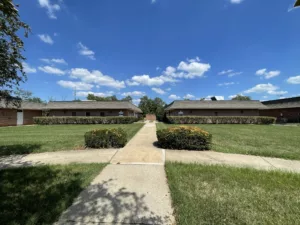One of the guys I graduated high school with went right into the trades. He knew college was not for him, but has excelled in the trades, now owning his own contracting business and doing well.
While the previous thought process might have been that the smart kids go to college and the ‘less smart’ ones go to trade school- this is changing with the realization that the trades are vital skilled labor with street smarts.
In today’s high construction cost market, having skilled contractors who understand the efficiencies that can be achieved in a construction project are essential.
If you are a real estate investor, you will have construction projects along the way, whether the routine replacing of a roof, or a ground up new construction. Here are a few tips we have picked up along the way from skilled contractors to help you save money in your next construction project.
1. Thorough Planning and Detailed Budgeting
- Preconstruction is critical to project success.
Planning is key. While owners often want to get to the exciting part of seeing the project take shape, over and over we have heard how essential detailed planning is to controlling costs.
- Carefully reviewing every component in the planning stage will help to identify costly overruns in the construction phase.
- Ensure Comprehensive Site Preparation
- The risk of cost overrun on a project are 70% in the dirt
Once out of the ground on a construction project, a large majority of the risk of a cost overrun has passed, as much of the delays and risk of increased costs are in the dirt. This can be mitigated by extra planning in pre-construction, in order to identify and anticipate these unknown costs.
-Site preparation sets the foundation for a safe and efficient construction process. It involves clearing the land, setting up proper drainage, and ensuring the soil is suitable for building. If this step isn’t executed properly, it could lead to construction delays and increased costs downstream.
- Example:
The investor has some extra land on his apartment complex and decides to place some mobile storage garage units for tenants. They rush the planning phase and skip soil and rock testing. When the excavation is on site to level for the garages, they discover a sink hole. The leads to a lengthy soil testing and permitting, which means the excavation has to be deployed twice to the site. While the sinkhole cost would not be avoided, the cost for two equipment moves to the site could be avoided with pre-construction planning and testing.
2. Consider Design/Build
- If you lack a lot of project knowledge, having a Design/Build team can help to save you substantial design frustration.
An integrated project team fosters a collaboration, where contractors, architects and engineers work towards common goals. This in turn facilitates better communication, quicker decision-making, and a more agile response to challenges, contributing to the overall cost-efficiency of building projects.
-Example:
An apartment project needed parking under the building. Rather than having a ramping design, which would require pre-cast concrete brought in at a much higher cost, the design team was able to put in a two-level parking deck. They used the natural slope of the street to allow for an entrance at street level on both parking levels, which removed a ramp from being needed. This meant the concrete could be poured in place, saving significant cost.
3. Bid different contractors in other locations- to get the best pricing
- Often times in a given market the competing contractors will get to know and understand their competitors bids and as a result have similar quotes.
Seeking out an ‘Out of Market’ contractor who is still within travel range could make sense, as their pricing may be different from local competitors. Or if the contractor is from a larger market, they may be used to more competition and thus have a lower overall bid.
4. Risk Management and Contingency Planning
- Unforeseen circumstances such as weather conditions, labor shortages, or regulatory changes can impact project costs.
Establishing a contingency fund, typically 5-10% of the total budget, helps absorb unexpected expenses. Think about the time of year the project will be completed- is it hunting season and you should budget for overtime because of labor shortages?
- Catch problems early on with careful monitoring
This is where effective monitoring and careful review can save projects from running off the rails quickly.
Encourage your subcontractors and site workers to have open communication and share the concerns they may see, which will leave to more cost saving opportunities.
– Example:
Your flooring contractor comes in to place the flooring in the space to warm up- but sees that your heat is off. Rather than laying a floor that may later expand and cause issues, they share their need for heat which is addressed promptly so they can lay the floor on schedule.
5. Efficient Labor and Workforce Management
- Labor overrun is one of biggest cost increases- watch even small things
Repeated we hear that the increased labor cost from inefficiencies is a major part of cost overrun. Even small items can make a significant impact.
–Example:
A subcontractor was asked to set up their staging area at the far end of a site. The repeated steps back and forth many times can lead to increase in labor cost and lost time. Watching your details closely can result in greater savings.
6. Investigate community incentives
- There are many programs available in both the form of grants and tax incentives, generally administered by the state.
If you qualify and apply, these programs can reduce your out-of-pocket cost, or decrease your taxes in the form of credits or abatements.
Check out the state resources here:
– Pennsylvania: https://dced.pa.gov/program/
-Maryland: https://planning.maryland.gov/Pages/OurWork/toolbox/rmdtoolbox.aspx
Conclusion
In construction projects there are a lot of moving parts. There will always be some unexpected costs, but with planning and active oversite they can be far less than the typical adage of ‘Add 50% to your budget and that will be the real cost’.
The savvy investor will pay close attention to their construction costs, and that attention to detail will reflect on their bottom line- making them look like the smartest in their graduating class no matter their trade.
Many of our investor clients appreciate the knowledgeable approach we provide in order to help enhance their real estate income. Contact us today to make improvements to your real estate cash flow.
Sources:
–https://www.procore.com/library/construction-cost-control
-The many clients and contractors we work with and share their knowledge






